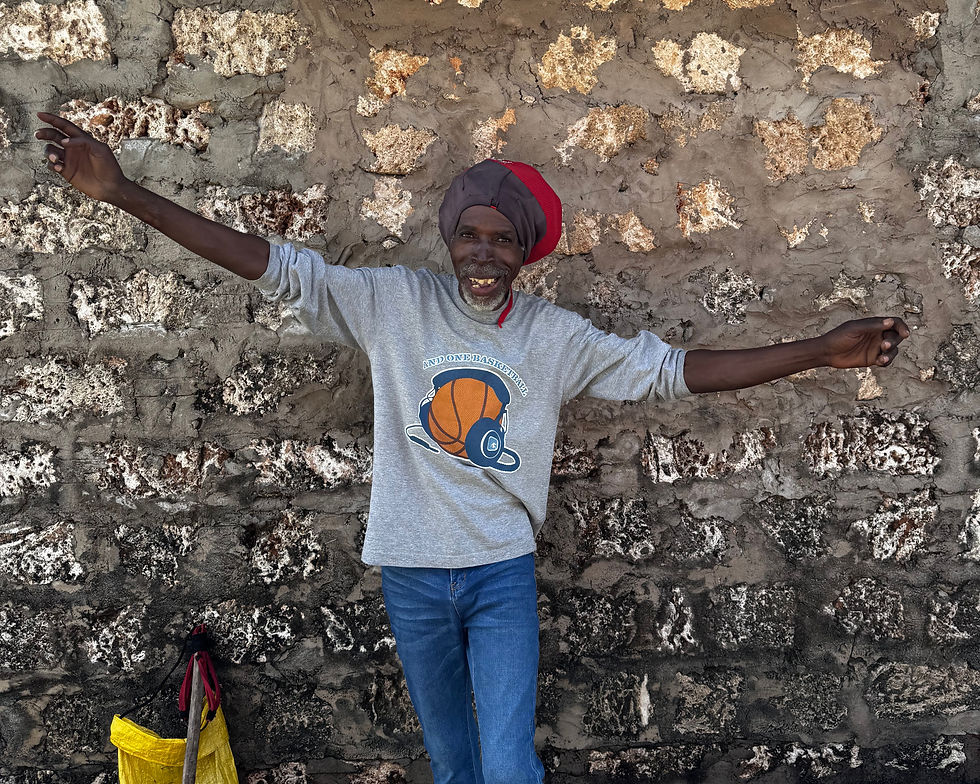Kwa Chambo Landing Site: A Legacy Etched in Tides
- Siana Phillips

- Aug 25
- 4 min read
Updated: Aug 28
In the quiet rhythms of Kilifi’s coast, where the sea meets the land with daily predictability and mystery, there lies a place that holds the collective memory of generations: Kwa Chambo.

What is now recognized as the Kwa Chambo Landing Site was not always a formal bandari. In the early 1970s, it was simply a gathering point — a spot where fishermen, drawn by the abundance of sardines (simsim), would meet before venturing into the Indian Ocean. It was here, under the open sky, that fishing plans were discussed, techniques shared, and friendships forged.

A Family’s Legacy
The roots of Kwa Chambo are personal. The land and its name trace back to a humble fisherman — the father of Mzee Chambo — who earned his living casting nets into these very waters. His wisdom and skill in fishing were passed on to his son, who at the time was a tailor. When the elder passed, Mzee Chambo laid down his needle and thread and took up the spear gun and fishing net, stepping into his father’s footsteps.
As fishing activity grew and more fishers gathered at the Kwa Ngala coastline, a community decision was made: divide the beach into zones. Each fisherman was allocated a section. Mzee Chambo was granted his portion — and with it, a name began to form. People started referring to the spot simply as “Kwa Chambo” — Chambo’s place.
At first, the beach lacked a proper landing site. After long hours at sea, fishers would carry their catch home and announce their return by blowing a conch shell. This signal, rich in tradition, would summon neighbors and buyers to their homes.

From Meeting Point to Landing Site
The turning point came when the number of fishermen became too great, and the need for a shared landing area became clear. With Mzee Chambo as a respected leader, the landing site was formally established — taking on his name, as a marker of leadership, legacy, and location.
From oral histories, we learn that fish were once plentiful, and the waters vibrant with life. The balance between catch and regeneration — what fisheries scientists call Maximum Sustainable Yield — was being maintained. Kwa Chambo's fishers, without formal training, were stewards of their marine ecosystem.

A Shift in the Waters
The 1990s brought change. Newcomers, particularly fishers from Pemba, Tanzania, introduced destructive techniques such as bottom trawling and ring netting. Unlike the traditional gear used at Kwa Chambo — spear guns, small nets, hand lines — these methods scraped the seabed, destroyed habitats, and disrupted breeding grounds. Overfishing surged. Replenishment slowed. The ecosystem struggled to recover.
Today, the consequences are visible. Fishermen report a sharp decline in stock biomass, backed by lived experience: former ray hotspots are now lifeless stretches of sea. Shark sightings, once a sign of a healthy ocean, are rare. Rays have all but disappeared from these grounds. The market is ready — but the sea is not. There simply isn’t enough fish.
One elder recalled a dangerous encounter with a shark — a time when these apex predators were common enough to pose both threat and opportunity. Now, they are ghosts of the past.

What This History Teaches Us
The story of Kwa Chambo is not one of loss alone. It is a story of stewardship, community agency, and intergenerational knowledge. It is also a cautionary tale: when traditional practices are ignored, and ecological limits pushed, abundance can vanish.
But Kwa Chambo is also a site of revival.
The same community that nurtured this landing site is now stepping forward to protect it. They are eager to see the once abundant reef return to its former glory and with guidance from the elders and energy from the youth, there is a movement to restore the reefs, train local marine ambassadors, and bring pride and prosperity back to the shoreline.
This is not nostalgia. It is memory, anchored in a desire to shape a future where Kwa Chambo remains a living place — not just of landing boats, but of launching hope.
At Ocean Sole, we are here to support this mission by helping the fishers maintain their cultural and sustainable practices, raise awareness, and mobilize the resources needed to bring this vision to life.

Or show your support by shopping our Flip Flop Art!
Thank you to Rehema Mercy our wonderful intern for conducting this research into the history of Kwa Chambo.



Comments